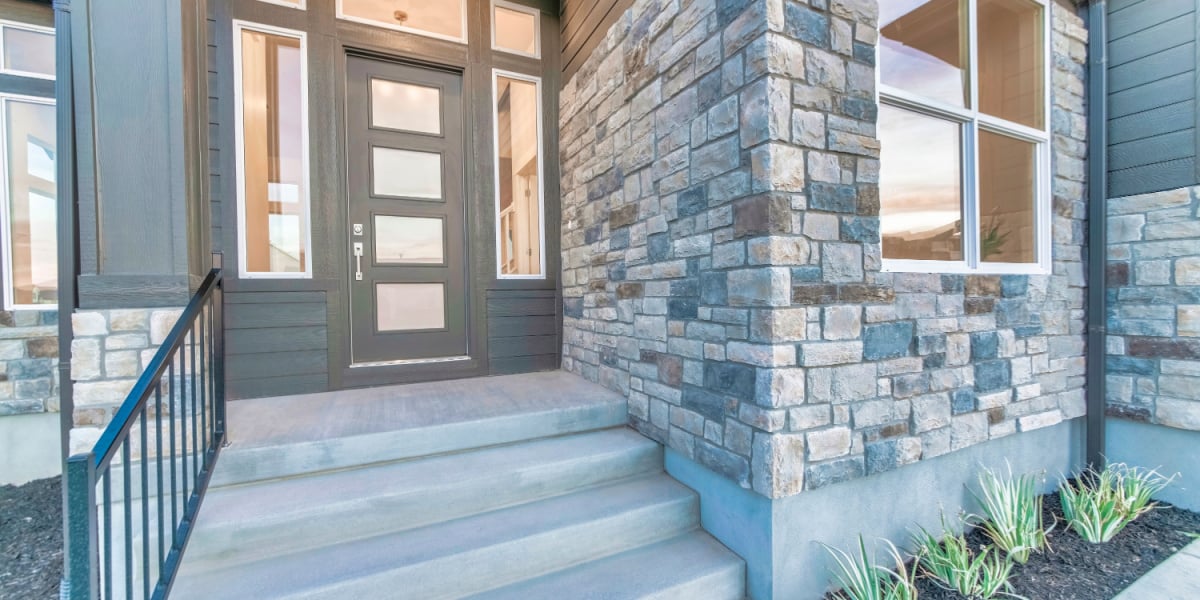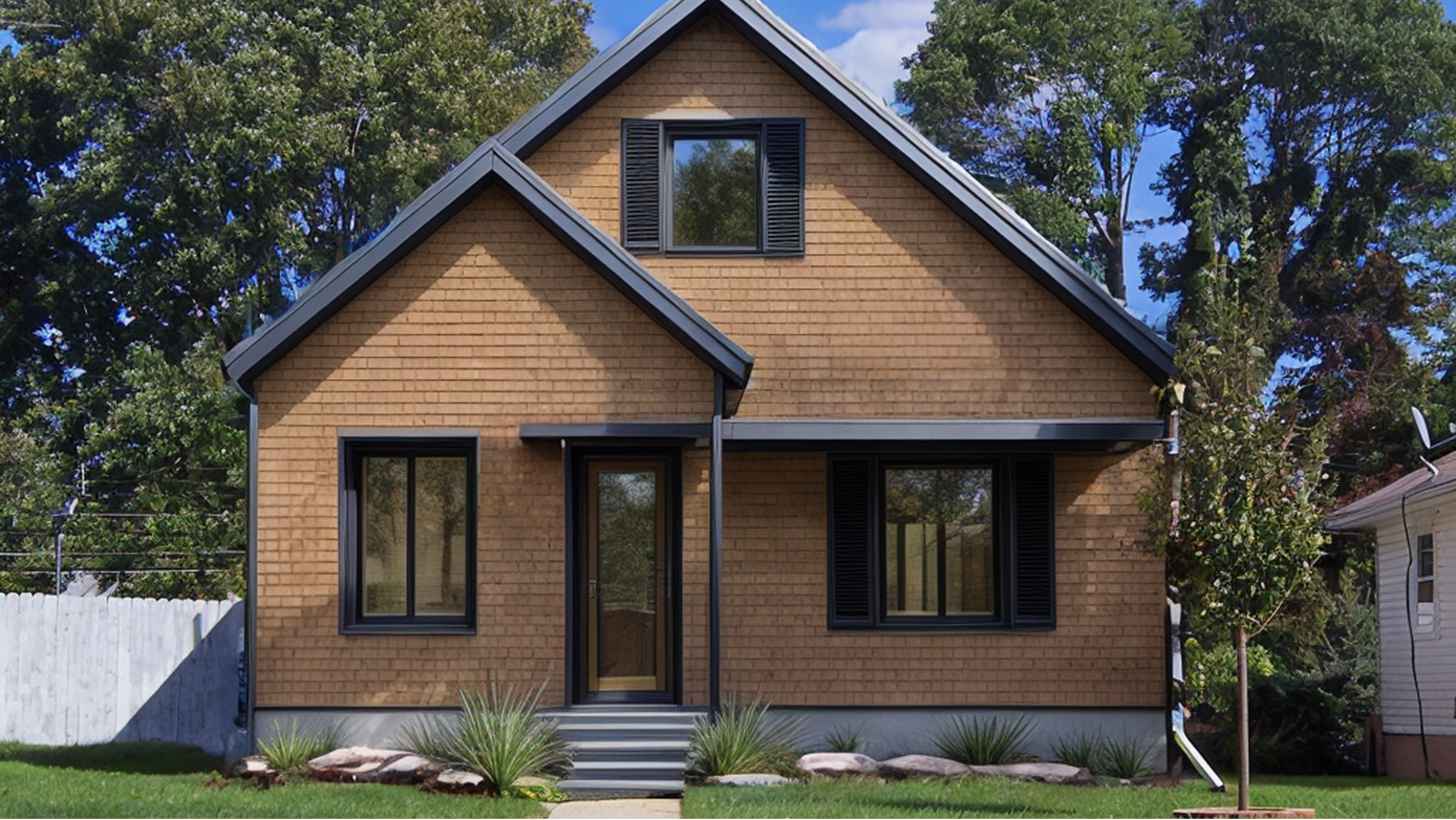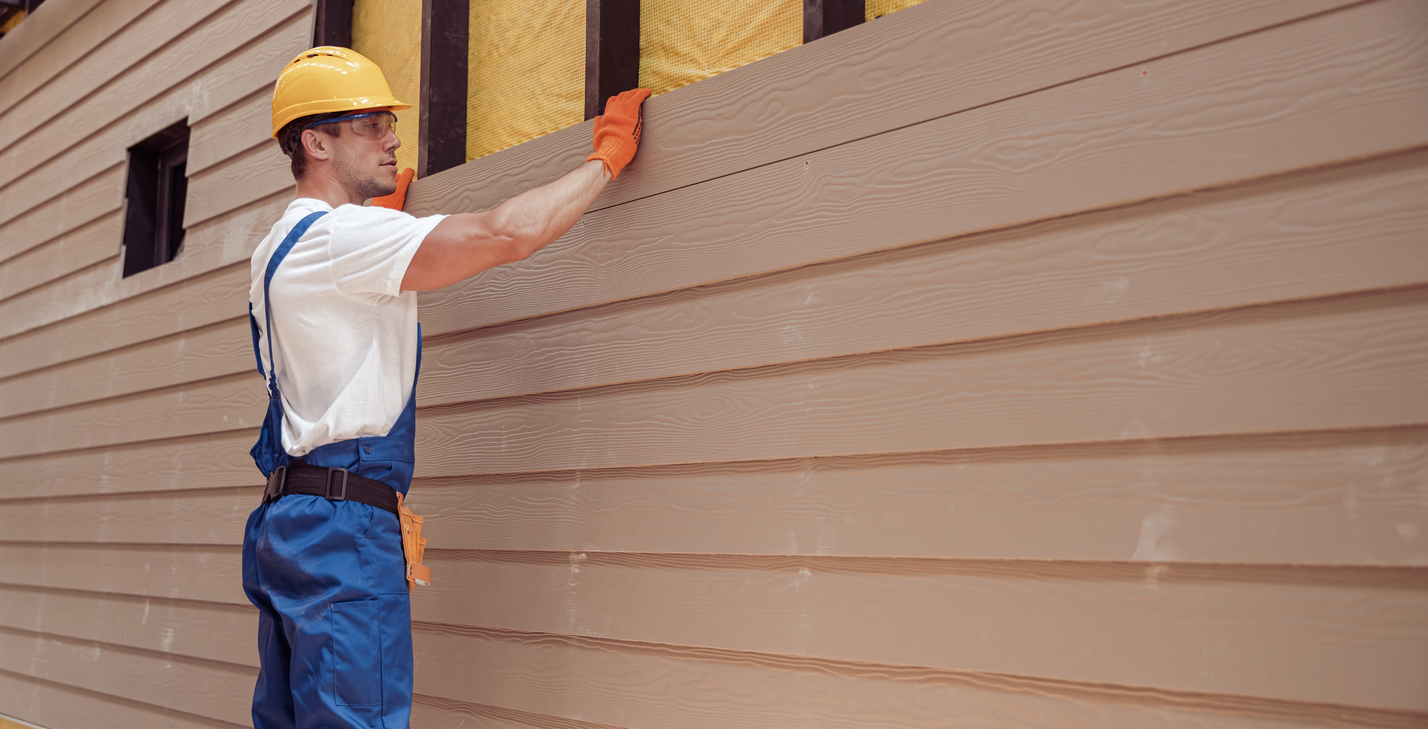Vinyl siding is one of the most popular siding materials in the United States. And it’s no wonder why, it’s affordable, relatively durable, and available in a variety of colors and designs. However, there are a variety of different siding options that might be more suitable for your home. While some of them might be more expensive, they prove to be a good investment due to their durability or elevated curb appeal. In this article, we’ll go over six other siding materials you can choose for your home.
6 Vinyl Siding Alternatives To Consider
- Wood Siding
Wood siding is a classic choice. Its average cost ranges from $2.25 to $15 per square foot, installed with the higher price point assigned to higher quality woods. With good maintenance, wood siding will last anywhere from 20 to 40 years. You should plan to reseal or repaint it every few years, patch holes or cracks as they develop, and replace damaged exterior wood siding before it impacts surrounding areas.
Although it’s easy to install and repairs don’t require any special tools constant patching and repainting can add up, increasing your overall maintenance costs. Other cons to wood siding are that it’s susceptible to rot and insect damage, and isn’t fire resistant. So if you’re living in an area prone to wildfires, wood siding wouldn’t be the wisest choice.
-
Fiber Cement Siding
Fiber cement siding is a blend of cement, sand, wood fibers, and sometimes fiberglass. Oftentimes, it’s made from recycled materials making it a sustainable, eco-friendly alternative. It recreates the look and feel of wood grain at a lower price point of $4.50 to $11.25 per square foot, installed. Plus, it eliminates many of the issues with wood siding, like vulnerability to rot, insects, UV, and fire damage. And it doesn’t need to be repainted or repaired as often, saving you money in the long run. -
Brick Siding
Brick siding makes an elegant statement that can last a lifetime. It’s coveted as a siding product because of its durability, structural value, and high resistance to fire, rot, and insect damage. Better yet, it requires almost no upkeep and is rarely painted.
However, brick is an expensive option upfront, $11 to $27 per square foot, installed. But once it’s installed, you most likely won’t have to put any more money down. If you love the look of brick but not its price tag, brick veneer is a great second choice. It’s made from thinly-cut bricks or composite material and can cost a fraction of the price of brick.
- Stone Siding
When installed correctly, stone siding can last indefinitely. It provides a gorgeous natural look to your home and is resistant to most weather conditions. One of its major benefits is its sustainability. Since it’s one of the most abundant materials on Earth, it’s considered a renewable resource that’s easy to source sustainability—unlike plastic and cement.
The major downside is its cost. At $21.50 to $38.75 per square foot, installed, it’s the most expensive siding option for your home. You will also need to hire a specialty mason to install it because many building codes specify that stone siding cannot exceed 15 pounds per square foot. Without a professional, you risk violating these codes if you don’t cut your stone to the correct thickness.
Similar to brick, you can opt for stone veneer. It’s much lighter, so you won’t need a specialty mason, and it’ll be less expensive. Unfortunately, since it’s mass-produced, your stone veneer siding might look less natural than if you chose pure stone.
- Stucco Siding
If you live in a predominantly dry climate, stucco is a great option! It’s extremely long-lasting and is made of sand, cement, and lime. It isn’t suitable for wet climates, that’s why you’ll see it on homes in the Southwest where there’s a dry heat. Of all your siding options, stucco is one of the strongest insulators—perfect in warmer climates—and is resistant to rot and insect infestation. Plus, it’s one of the more affordable options at only $5.50 to $7.50 per square foot, installed.
Since it’s so long-lasting, stucco usually requires very little maintenance and can be easily repaired. However, if the crack is severe, moisture can seep in and cause further damage. But thankfully, most cracks can be remedied with a little caulk.
- Metal Siding
There are a lot of benefits to choosing metal siding, the main one being its sleek, modern look. Additionally, it’s resistant to rot because it doesn’t absorb moisture, and insects can’t bore through it to make a home. Metal siding, particularly steel, is durable and can withstand most weather conditions and wildfires. Finally, since the metal reflects the sun it’s an energy-efficient option.
Although it repels most weather, metal siding can dent really easily from hail, tree branches, or even a soccer ball. Replacing a dented panel can be a pain because the whole thing has to be replaced, there isn’t room for patchwork. While aluminum siding is budget-friendly—$3.00 to $7.25 per square foot, installed—higher-quality metal, like steel, can exceed most people’s price points.
The Cons of Vinyl
Although it has many pros (cost and color variety), vinyl siding has its downsides. It’s susceptible to warping or cracking depending on the climate you live in. Extremely high temps or extremely low temps can alter the state of your siding panels. Additionally, it cannot withstand wildfires, so if you live in a fire-rated zone vinyl siding isn’t the right choice for you.
In the event of damage or deterioration, vinyl siding can be challenging to repair. Unlike materials like wood that can be patched or replaced in small sections, vinyl siding often requires full panel replacement, making repairs more expensive and time-consuming.
Also,iIf you change your mind about the color, you can’t just change it since it doesn’t take paint well. Vinyl can leak between seams if not installed correctly—potentially causing more widespread damage. That’s why it’s important to work with an experienced contractor you trust to do the job right.
What Should I Choose Instead of Vinyl Siding For My Home?
While there’s not a clear, straightforward answer, there are many things you can take into consideration. Weigh your budget limitations against your area’s climate and your preferred aesthetics. Maybe you like the durability of stone but aren’t a fan of its look, so metal might make more sense for you. Or you’re obsessed with the look of wood siding but live in a damp climate, making fiber cement the ideal choice.
If you wish to test out different siding options before committing fully, be sure to check out HOVER. Our technology shows you what your home would look like with different siding options, so you feel confident with your decision.
Download the app to get started!

-1.jpg)

